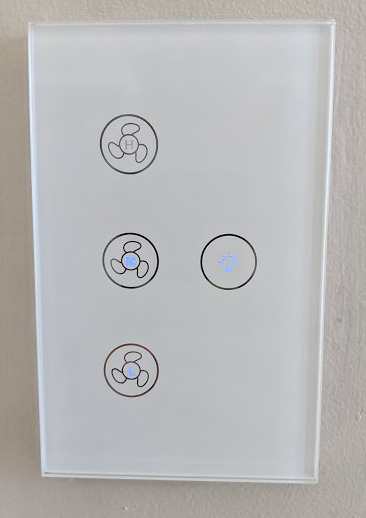Tuya Fan
The tuya fan platform creates a variable speed fan from a
tuya component.

The Tuya fan requires a Tuya MCU to be configured.
Here is an example output for a Tuya fan controller:
[12:39:45][C][tuya:023]: Tuya:
[12:39:45][C][tuya:032]: Datapoint 1: switch (value: ON)
[12:39:45][C][tuya:036]: Datapoint 3: enum (value: 1)
[12:39:45][C][tuya:036]: Datapoint 6: enum (value: 0)
[12:39:45][C][tuya:034]: Datapoint 7: int value (value: 0)
[12:39:45][C][tuya:032]: Datapoint 9: switch (value: OFF)
[12:39:45][C][tuya:046]: Product: '{"p":"hqq73kftvzh8c92u","v":"1.0.0","m":0}'On this controller, the data points are:
- 1 represents the fan on/off state.
- 3 represents the speed setting.
- 9 represents the additional light switch. (use the Tuya Dimmer component to control this)
- 6 & 7 are unknown and don’t seem to affect the state.
Based on this, you can create the fan as follows:
# Create a fan
fan:
- platform: "tuya"
name: "MyFan"
switch_datapoint: 1
speed_datapoint: 3Configuration variables
speed_datapoint (Required, int): The datapoint id number of the fan speed.
switch_datapoint (Required, int): The datapoint id number of the fan switch.
oscillation_datapoint (Optional, int): The datapoint id number of the oscillation switch. Probably not supported on any Tuya controllers currently, but it’s there if need be.
direction_datapoint (Optional, int): The datapoint id number of the direction switch. Supported by some ceiling fans.
speed_count (Optional, int): Set the number of supported discrete speed levels. Defaults to
3.All other options from Fan.
ℹ️ Note
The MCU on the Tuya dimmer handles the LEDs and they dont seem to be controllable over the serial bus.

